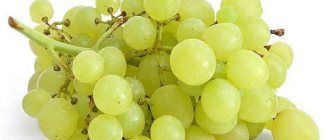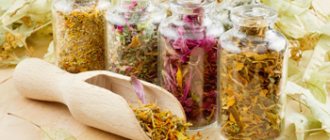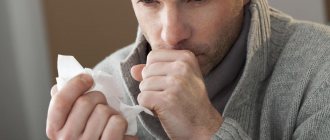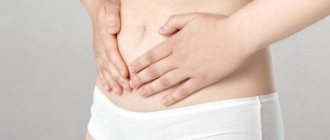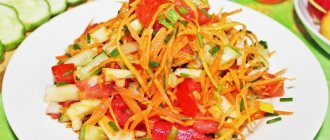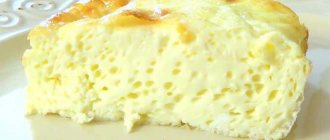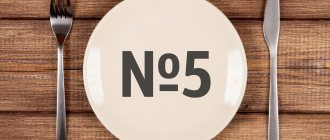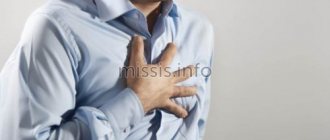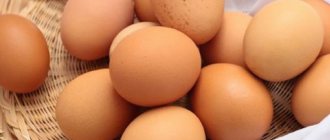During the treatment of acute cholecystitis, it is very important to adhere to a diet, the essence of which is to reduce the consumption of foods with cholesterol and increase the amount of fiber. Such nutrition will contribute to the proper production of bile and improve the functioning of the digestive tract. But regardless of prohibited foods, nutrition should be complete with the required amount of proteins, fats and carbohydrates.
Nutrition for acute cholecystitis: basic rules
In acute cholecystitis, you need to follow proper nutrition.
Based on the stage or severity of the disease, the specialist draws up a specific diet plan for each patient. In this case, it is necessary to follow the general principles of eating food for this disease:
- Divide the daily food intake into 5-6 parts - such nutrition will have a positive effect on the functionality of the gallbladder;
- eat regularly at certain hours - this will gradually lead to proper production of bile;
- increase fluid intake to 2–2.5 liters per day - will help remove bile and harmful products from the body in a short time;
- completely abandon alcohol-containing drinks - alcohol can cause the development of hepatic colic or the appearance of stones;
- reduce the amount of salt - will prevent stagnation of bile;
- the temperature of consumed products should be within 15-60C;
- do not forcefully eat food - such violence against the body will not have a positive effect, but will only adversely affect the production of bile.
Food should bring not only benefits, but also pleasure. This can be achieved if you set the table beautifully and start eating in a good mood or pleasant company. This is an important part of getting rid of acute cholecystitis.
Proteins, fats and carbohydrates
Daily protein requirement - from 80 to 90 grams
Particular attention should be paid to the amount of proteins, fats and carbohydrates in the daily diet, because not only the condition of the liver, but also the entire body depends on this, since cells and other organs must receive a normal amount of nutrients and vitamins. So, for diseases of the liver and gall bladder, the daily protein content should be from 80 to 90 grams. If there are much fewer proteins, this will lead to liver dystrophy and, as a consequence, the development of cirrhosis. It is best to eat foods that contain easily digestible proteins. For example, cottage cheese.
As for fats, they should not be more than 80 - 90 grams. A deficiency can lead to negative consequences, and an excess will increase the load on the organs. It is believed that in fact fats do not pose a particular danger to the liver, but if a person consumes them in large quantities, this leads to the deposition of cholesterol plaques, as well as excess weight, which is always harmful. Most of the daily portion of fat should be animal fats, which are better absorbed, and only one third should be vegetable fats. Fat improves the absorption of vitamins and nutrients, which is very important for a diseased liver. That is why patients are advised to add either butter or sunflower oil to their porridge.
Separately, it is necessary to say about carbohydrates. Under no circumstances should their quantity be reduced. The main thing is not to eat a lot of foods containing easily digestible carbohydrates. These include sugar and honey. It is best to allocate about 100 grams per day for them. The remaining 300-350 grams should be simple carbohydrates. Particular attention is paid to their quality, not quantity. True, this does not mean that you need to lean on foods that contain a lot of carbohydrates. Everything should be in moderation, because excessive consumption can lead to the deposition of fats in the liver, which is very bad, as well as stagnation of bile.
Such different diets
Cholecystitis must be treated with a strict diet.
Each stage of the acute form of the disease has its own diet. From the moment of the attack, a complete refusal to eat is prescribed.
Fasting continues for up to four days - during this period the pain subsides. Only liquids are allowed: berry compotes, jelly, fruit drinks and still mineral water.
An ideal option would be a decoction of lemon balm, rose hips or chamomile. Drinks should be warm, and they should be consumed in small sips and as often as possible.
When the pain subsides, pureed liquid food and soups based on vegetable broth are slowly introduced into the diet. Porridge is prepared using water with a little milk added. The following are suitable for this: rice, semolina and oatmeal.
Broccoli and cauliflower are introduced into the diet, starting with small portions. The amount of water and drinks increases to two liters per day. Gradually, fermented milk products, as well as lean meat and fish, are added to the diet.
Varieties
The varieties of Diet No. 5 include, in addition to those described above, also a lipotropic-fat diet - 5 l/f. Prescribed to patients with cholecystitis for problems caused by stagnation of bile. cholesterol from it .
The diet increased the fat content (50% of which is vegetable oils), slightly increased the protein content (up to 100 g) and reduced the amount of carbohydrates (300 g) by limiting sugar. Total calorie content is 2600 kcal.
The diet provides for a sharp limitation in the consumption of extractive substances (meat and fish broths), cholesterol and foods containing large amounts of essential oils. The diet is enriched with lipotropic protein products (egg whites, cottage cheese, lean meat, fish), refined vegetable oils, wheat bran, vegetables and fruits.
All types of oils (butter and vegetable) are added only to ready-made dishes. Refractory animal fats, butter dough, spices, and whole milk are excluded. Food is prepared by baking or boiling; chopping is not necessary.
What to give up?
In case of acute cholecystitis, you need to avoid fried and spicy foods.
Diet 5a is based on foods that reduce the load on the bile organ, have a positive effect on digestion without overloading it and promote the proper functioning of the gallbladder.
Products that can thicken bile and thereby contribute to its stagnation are strictly prohibited.
Avoid foods that can lead to the formation of stones, rotting and fermentation processes, and also have an irritating effect on the liver. In case of acute cholecystitis, you must avoid:
- meat and poultry with a lot of fat;
- fresh baked goods;
- yeast and puff pastry;
- smoked meats, sausages and canned products;
- broth based on meat, fish, mushrooms;
- liver and kidneys;
- hard-boiled eggs and fried eggs;
- products with cocoa beans, cream and black tea;
- fatty fish, smoked or salted;
- seasonings and spices;
- chicken fat, brisket and lard;
- peas, beans and all legumes;
- spinach, green onions, garlic and sorrel;
- mushrooms and radishes.
Dairy products with high fat content (cottage cheese, cream, sour cream, cheese) are allowed to be consumed in small quantities once every seven days. The norm for egg yolks is 2 pieces per week.
What are these diseases and why is a diet needed?
A gastroenterologist will give nutritional recommendations
Cholecystitis is an inflammation of the gallbladder due to stagnation of bile, which most often occurs due to blockage of the bile ducts. Overeating, love of fatty meats, and an abundance of spicy foods can lead to cholecystitis. Symptoms of cholecystitis include nausea, vomiting, yellowness of the skin, bitterness in the mouth, fever, pain in the right hypochondrium. This is a rather long-term disease that often becomes chronic. Periods of exacerbation are followed by temporary relief. Usually the disease worsens in the presence of provoking factors: when taking fatty or spicy foods, alcohol.
Pancreatitis is an inflammation of the pancreas caused by impaired outflow of pancreatic juice. Due to the lack of normal outflow of enzymes, they begin to digest the pancreas itself, causing its inflammation. Pancreatitis is a fairly common disease. It is most often found among lovers of fatty foods and alcohol. Signs of pancreatitis include intense abdominal pain, nausea, vomiting, diarrhea or constipation, and increased gas production.
Why are these diseases related? Cholecystitis and cholelithiasis can interfere with the outflow of pancreatic juice, causing pancreatitis. Or, on the contrary, the gallbladder becomes inflamed due to the release of pancreatic juice into it.
Pancreatitis and cholecystitis have become so common precisely because of the habit of eating what is tasty, and not what is healthy. In addition, it has become fashionable to snack on the go and eat fast food. Many people find it impossible to give up cold beer and barbecue. However, a diet is simply necessary to give rest to the digestive system and relieve inflammation in the organs. Diet for pancreatitis and cholecystitis should be light, excluding spices and fatty foods.
Authorized Products
In acute cholecystitis, you can eat protein foods.
This list includes products that contribute to maximum unloading of the digestive tract.
They are consumed boiled, steamed or baked (without crust). The list of permitted products includes:
- yesterday's bread made from flour made from wheat, bran and rye;
- croutons, crackers (without salt);
- pies made from yeast-free dough;
- green tea with lemon, rosehip and lemon balm decoctions, freshly squeezed juices and compotes without sugar;
- vareniki;
- berry and fruit jellies and mousses;
- vegetable broth and pureed soups from it and beetroot soup;
- porridge from semolina, buckwheat and oatmeal;
- lean fish (hake, pollock) and seafood;
- sour cream, kefir, cheese (mild);
- grated vegetables (pumpkin, cucumbers, potatoes, carrots);
- casseroles with low-fat cottage cheese, rice and sunflower seeds;
- lean meat, chicken breast, rabbit;
- chicken egg white;
- apples (red varieties), pomegranates, bananas (no more than one per day);
- olive oil and butter (up to 30 g per day);
- sauces based on vegetables and milk;
- greenery;
- non-sour baked fruits;
- turmeric, cinnamon and vanillin.
From time to time you are allowed to indulge in marshmallows and marshmallows. It is only necessary to observe the measure. For variety, you can also use honey.
Menu (Power Mode)
In case of exacerbation of gastritis and cholecystitis, food should be gentle: mucous soups, pureed soups, pureed soups from vegetables and meat with the addition of cream, pureed milk porridges (buckwheat, oatmeal, rice), pureed cottage cheese, steamed omelettes, meat pates, steamed cutlets and dumplings. Every day you can include baked apples, pumpkin porridge, and juices (fruit and vegetable) in your diet.
When expanding the diet, soups are not pureed, and you can prepare cabbage soup from fresh cabbage and borscht. To prepare them, it is better to take Savoy or Brussels sprouts (grate them), as are more delicate varieties. Fish and meat dishes can be eaten in pieces. Vegetable dishes are also varied: puree of various vegetables, vegetables in milk sauce, stew, potatoes in milk, cauliflower or savoy cabbage stewed in milk, potato roll, vegetable cabbage rolls.
Desserts for these diseases are widely represented: baked cheesecakes with carrots, cottage cheese souffle and pudding, berry mousses, sambuca, cottage cheese soufflé, protein biscuit and desserts made from proteins and sugar (for example, snowballs, meringues and meringues). You can sometimes include pancakes made from oatmeal or buckwheat flour in your diet, but cook them in a slow cooker without fat and do not fry them.
The use of different cooking methods allows you to further diversify your diet. At night, patients are recommended to drink fermented milk drinks or milk if tolerated normally.
| Breakfast |
|
| Lunch |
|
| Dinner |
|
| Afternoon snack |
|
| Dinner |
|
| For the night |
|
| Breakfast |
|
| Lunch |
|
| Dinner |
|
| Afternoon snack |
|
| Dinner |
|
| For the night |
|
| Breakfast |
|
| Lunch |
|
| Dinner |
|
| Afternoon snack |
|
| Dinner |
|
| For the night |
|
| Breakfast |
|
| Lunch |
|
| Dinner |
|
| Afternoon snack |
|
| Dinner |
|
| For the night |
|
Giving up the diet
Failure to follow a diet for cholecystitis can lead to the development of pancreatitis.
Failure to follow the diet can result in the following unpleasant “surprises”:
- gallstones;
- pancreatitis;
- dropsy or suppuration in the gallbladder;
- hepatic colic;
- gangrene or abscess of the gallbladder;
- diffuse peritonitis;
- perforation of the gallbladder;
- jaundice.
Almost all of the listed complications can lead to the operating table.
Prohibited foods for liver and gallbladder diseases
Cholecystitis most often occurs due to poor nutrition
There is a list of foods that are strictly forbidden to eat if a person suffers from a particular liver or gallbladder disease. Such products include:
- Fatty fish and meat, because they sharply increase the load on the already weak liver and gall bladder
- Fried foods, since their calorie content increases several times, and the vegetable oil in which the dishes are prepared completely loses its beneficial properties and, on the contrary, becomes harmful
- Salo
- Fatty broths. Some people like the broth to be very fatty, but it is precisely such broths that are harmful not only to a diseased liver, but also to a healthy one.
- Any smoked meats, especially salami, cervelata
- Canned food
- By-products
- Legumes, since they are quite heavy and difficult for the stomach to digest
- Mushrooms
- Pickled products
- Buns, cakes
- Coffee
It is strictly forbidden for people with a diseased liver to drink alcoholic beverages, as they destroy it even more and cause intoxication of the body.
Diet for acute cholecystitis in children
The diet of children during exacerbation of the disease is not much different from the diet of adults. The main direction of the diet is to reduce fat intake, and normalize protein and carbohydrates to average daily values.
Everything harmful (fried, spicy, salty) is also excluded from children's diet; chocolate and baked goods are prohibited. The main diet consists of grated fruits and vegetables, steamed foods, and liquid in the required quantities.
results
During an exacerbation, it is necessary to adhere to a fairly strict diet; this can last up to several weeks. But even after the end of the acute phase, you need to adhere to a special diet.
A therapeutic diet will not provoke dyspeptic symptoms. Including fruits, vegetables, bran and polyunsaturated fatty acids in the diet has a positive effect on bile secretion and helps maintain health.
This is interesting
Diets: which ones are the safest and most effective?
Cholecystitis: what it is, causes, signs, symptoms, treatment - MEDSI
Table of contents
- Causes
- Pathogenesis
- Risk factors
- Classification of the disease
- Symptoms of the disease
- Diagnostics
- Treatment methods for cholecystitis
- Possible complications
- Diet for cholecystitis
- Advantages of contacting MEDSI
Cholecystitis is an inflammatory process that occurs in the gallbladder. Today, about 20% of the world's population suffers from this pathology. Moreover, women over 50 years of age are most susceptible to the disease. Inflammation is detected in people of other ages. Moreover, children and adolescents are characterized by a stoneless form. The disease is often diagnosed in developed countries. This is due to a special lifestyle and eating behavior.
Causes
Stagnation of bile and the infectious process in the gallbladder are of great importance for the development of pathology. Dangerous microorganisms penetrate the organ from other foci during otitis media, periodontal disease and other diseases, or from the intestines by contact. Pathogenic microflora is predominantly represented by bacteria, viruses, and less commonly parasites and protozoa.
The main reasons for the development of cholecystitis include:
- Gallstone disease. Against this background, pathology develops in most cases. This is explained by the fact that it is stones that lead to stagnation of bile. They clog the lumen, injure the mucous membranes and cause adhesions. At the same time, stones support the inflammatory process
- Biliary dyskinesia. This pathology leads to insufficient emptying of the organ, inflammation, and stone formation.
- Congenital anatomical anomalies. Scars, curvatures, constrictions of the bladder, narrowing of the ducts provoke stagnation of bile
Other diseases and neoplasms (including cysts and tumors) can also provoke cholecystitis.
Pathogenesis
The basis of the mechanism of development of the disease is stagnation of bile. As a result, the barrier (protective) function of the mucosal epithelium and its resistance to pathogenic flora are reduced. In this case, the bile itself becomes a place of active reproduction of microbes. During their life, they form toxins. As the pathology progresses, inflammation spreads. At the same time, the contractility of the gallbladder decreases. Mucus and pus appear in the bile.
If the inflammation spreads to neighboring tissues, an abscess forms. Circulatory disorders cause hemorrhages in the walls of the bladder. Individual areas of necrosis (tissue death) appear.
Of course, all this negatively affects human health. It is very important to pay attention to the symptoms of cholecystitis in time and begin its treatment. Only in this case can the process be prevented from becoming chronic and long-term, long-term and constant therapy avoided.
Risk factors
Cholecystitis occurs against the background of a number of provoking factors, which include:
- Changes in the normal composition and consistency of bile
- Hormonal changes that occur in the body during menopause, pregnancy, etc.
- Poor nutrition
- Rejection of pancreatic enzymes
- Smoking
- Alcohol abuse
- Sedentary work and lack of necessary stress
- Heredity
Classification of the disease
Today, about 20% of the world's population suffers from this pathology.
There are several forms of pathology.
Taking into account the origin, the disease is divided into 2 main types:
- Calculous cholecystitis. With this type of pathology, stones are found in the gallbladder. This is the most common option. This disease is characterized by pronounced clinical manifestations with attacks of colic. At the same time, the pathology can occur without any symptoms at all.
- Noncalculous cholecystitis. With this pathology, stones are not detected. The disease has a more favorable course. It is characterized by rare exacerbations
Depending on the inflammatory-destructive changes and the severity of the symptoms, cholecystitis can be:
- Spicy. The disease in this form is characterized by pronounced signs of inflammation. Usually it occurs with clear clinical manifestations and obvious intoxication. Pain in acute cholecystitis is intense, wavy in nature
- Chronic. The disease is characterized by a slow course without obvious symptoms. The pain is either completely absent or mild and aching
Depending on the degree of manifestations, the following forms of cholecystitis are distinguished:
- Easy. It is characterized by mild pain syndrome. Typically, attacks last no more than 10–20 minutes and go away on their own. Exacerbations occur 1–2 times a year. Their duration usually does not exceed 14 days. The functions of other organs do not change. Digestive disorders are rarely detected
- Average. This form of pathology is characterized by persistent pain. Exacerbations last 3–4 weeks and occur 3 times a year or more often. Typically, diagnostics reveals changes in liver function, manifested by increased levels of bilirubin, AST and ALT.
- Heavy. This form of cholecystitis is characterized by dysfunction of neighboring organs, pancreatitis and hepatitis develop. Pain in pathology is pronounced. Exacerbations last more than a month and occur frequently. Feeling does not improve even with correct therapy
Depending on the nature of the inflammatory-destructive process, the following types of cholecystitis are distinguished:
- Recurrent. It is characterized by exacerbation attacks that go into complete remission
- Monotonous. With this course of the disease, there are no remissions. Patients constantly complain of certain symptoms of cholecystitis
- Intermittent. Exacerbations of cholecystitis occur against the background of its mild permanent symptoms
Symptoms of the disease
Acute cholecystitis
In the acalculous form of the disease, patients complain of nagging pain as a result of overeating and drinking alcohol. This form proceeds without complications. With calculous pathology, patients complain of pain, a bitter taste in the mouth, itchy skin and yellowness.
Chronic cholecystitis
In many ways, the signs of pathology are determined by the nature of the inflammation, as well as the absence or presence of stones. During periods of exacerbation, patients complain of pain in the form of attacks, which radiates to the scapula, shoulder and collarbone. Usually, unpleasant sensations occur due to errors in diet, stress and after physical activity. Often the pain is accompanied by weakness, insomnia, and sweating. In some cases, the following are added to the main symptoms of cholecystitis: vomiting and nausea, bloating, stool disorders, fever, tachycardia, low blood pressure. In the remission phase, symptoms are absent or mild.
In many ways, the signs of pathology are determined by the nature of the inflammation, as well as the absence or presence of stones.
Diagnostics
As part of the examination, the doctor will have to determine the nature and type of the disease. First there is a consultation. The gastroenterologist makes a preliminary diagnosis based on complaints and examination. After this, the type and degree of cholecystitis are determined.
For this, the gastroenterologist prescribes:
- Ultrasound of the gallbladder. Diagnostics allows you to determine the shape and size of the organ, the thickness of its walls, the presence of stones and contractile function
- Fractional duodenal intubation. As part of this diagnosis, 3 portions of bile are taken for further microscopic examination. The technique allows you to evaluate the color and consistency of biological fluid, as well as bladder motility. Additionally, the sensitivity of microflora to antibiotics is determined
- Cholecystocholangiography. The method helps to identify violations of the motor function of the entire bile excretion system, detect stones and possible deformations of the bladder
Additionally, the following examinations may be carried out:
- FGDS
- Laparoscopy
- MSCT
Laboratory blood testing is also important. During exacerbations of cholecystitis, the general analysis reveals high levels of leukocytes and ESR, and the biochemical analysis reveals an increase in bilirubin, cholesterol, AST and ALT.
Treatment methods for cholecystitis
Conservative therapy
The basis of treatment for both acute and chronic disease without stones is taking medications and a special diet.
Patients are prescribed painkillers and antispasmodics. Antibacterial medications may also be recommended. They are prescribed when pathogenic bacteria are identified and are selected depending on the pathogen. During the remission stage, agents are additionally recommended that stimulate the formation of bile and its outflow.
The diet for cholecystitis is recommended for all forms of the disease and at any stage. We will talk about its features later. General principles include split meals at least 5-6 times a day and eating stewed, boiled and baked foods.
Physiotherapy is also recommended at all stages of the disease. It allows you to solve several problems at once, including relieving pain and reducing inflammation, as well as restoring the tone of the organ.
Surgical methods
If the pathology with cholelithiasis occurs with frequent relapses or risks of complications, they resort to surgical intervention.
In advanced forms of the disease, complete removal of the gallbladder is performed. Particular attention is currently paid to laparoscopic techniques. Open intervention is performed only in case of obesity in the patient, complicated forms of pathology and obstructive jaundice.
If there are stones, they are crushed using the shock wave lithotripsy technique.
Possible complications
If cholecystitis is not treated promptly, the following serious problems may occur:
- Hydrocele of the gallbladder with further rupture and peritonitis. The development of pathology is provoked by the inflammatory process and excessive stretching of the organ
- Sepsis. This complication is caused by stagnation of bile with its infection and penetration of pathogens into the blood.
- Gangrene of the gallbladder. This complication occurs due to impaired blood microcirculation with further tissue necrosis
Emergency surgical care is required for the accumulation of pus in the organ cavity, inflammation outside the gallbladder and perforation.
Diet for cholecystitis
Special nutrition can both prevent the development of the disease and reduce the risk of developing its complications. Patients are recommended to eat low-calorie foods of plant origin.
You should saturate your diet with substances such as:
Special nutrition can both prevent the development of the disease and reduce the risk of developing its complications.
- Fatty polyunsaturated acids
- Vitamin E
- Phospholipids
This is due to the fact that they dilute bile and increase the contractile function of the organ. Bran, fruits and vegetables are recommended for the discharge of bile. You can also eat milk soups, pasta and cereals, eat bread, unsweetened cookies and crackers. It is acceptable to consume mild sauces, dried fruits, non-sour jam, herbs, vanilla and cinnamon, and marmalade.
Foods such as mushrooms and legumes, egg yolks, spicy seasonings, fatty dairy products, sour vegetables, and chocolates are prohibited. You cannot drink coffee and cocoa, carbonated drinks and alcohol.
Advantages of contacting MEDSI
- Modern expert class equipment.
It is used for diagnosis and early detection of pathology, determining its type and other important features - Multidisciplinary approach.
Thanks to it, high-quality diagnostics and patient monitoring are provided - Treatment according to the latest recommendations (including international ones).
Thanks to this, therapy is as effective and safe as possible. It allows you to achieve long-term remission - Minimally invasive techniques.
Thanks to them, the risks of complications are reduced and the rehabilitation period is shortened.
MEDSI clinics have modern expert-class equipment for accurate and quick diagnostics.
To clarify the conditions for treating cholecystitis or to make an appointment, just call +7 (495) 7-800-500. Our specialist will answer all questions. Recording is also possible through the SmartMed application.
Advantages and disadvantages
| pros | Minuses |
|
|
Therapeutic fasting
Short-term abstinence from food can have different effects depending on the existing disease, as well as the individual characteristics of the patient. Therapeutic fasting is widely practiced for acute pancreatitis.
This procedure allows you to stop the production of pancreatic enzymes, which corrode and destroy organ tissue. In addition, refusing food cleanses the organ after the inflammatory process and helps accelerate regeneration processes.
Now let's talk about the features of fasting with cholecystitis. As you know, the procedure is of two types: dry and wet, that is, with the use of liquid. The first type of fasting is usually prescribed for a chronic process. When cholelithiasis develops, it is absolutely forbidden to refuse food and liquid!
Fasting during cholecystitis will help stop the acute inflammatory process
Fasting is an effective method of treatment, but it can also be harmful if the patient does not know the rules for its implementation. It is also important to understand how to properly overcome hunger. Having entered the mode of refusing food, it is extremely necessary for the patient to remain in bed. Usually, with acute cholecystitis, a person is not more bothered by the feeling of hunger, since the pathological process is accompanied by nausea and even vomiting.
Important! Prolonged fasting is fraught with the fact that toxic substances will activate a new wave of the inflammatory process.
Do not forget about contraindications to the procedure, these include:
- anemia;
- hypoglycemia, in which the level of glucose in the blood decreases;
- arterial hypotension;
- avitaminosis.
